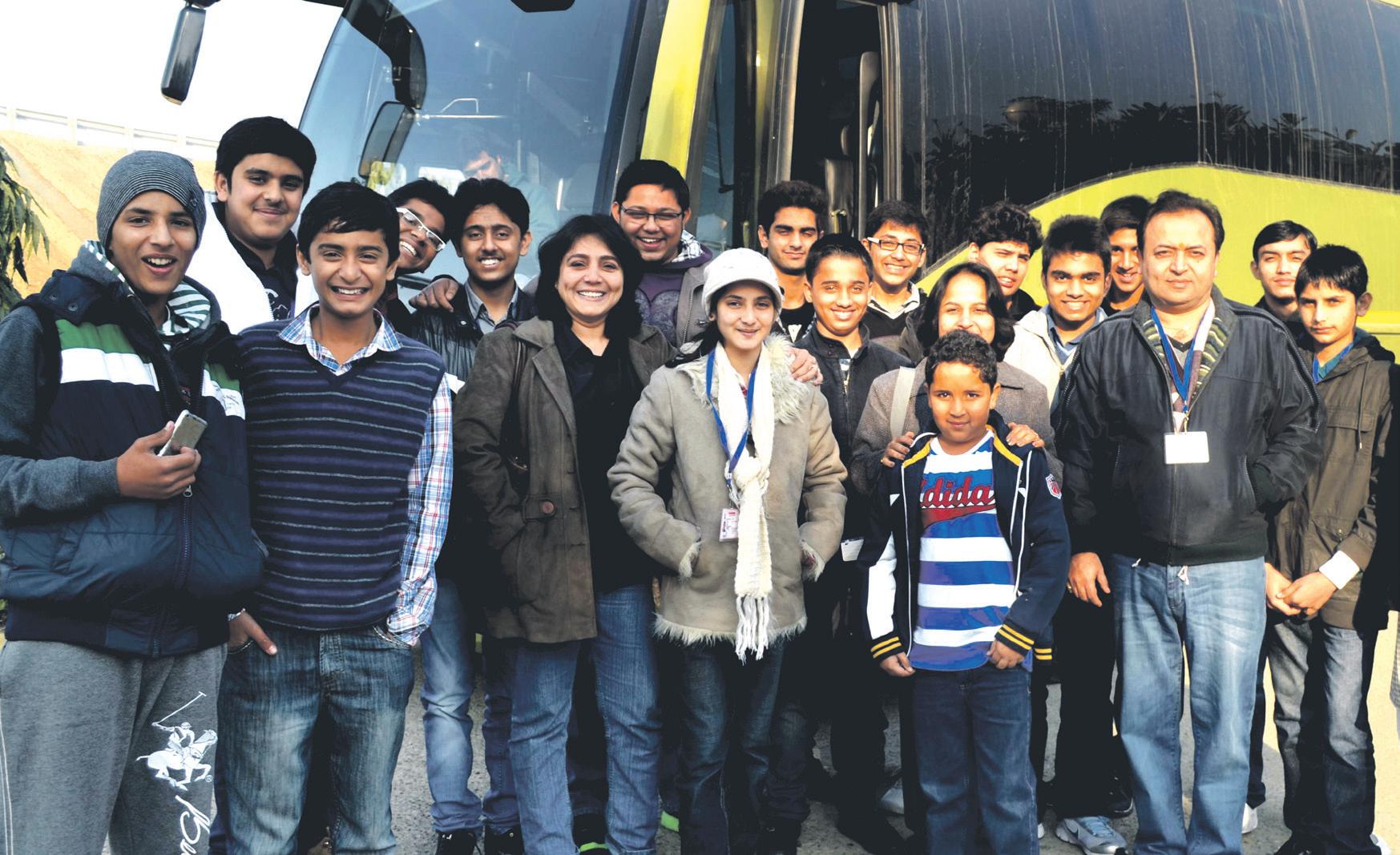
4 minute read
Independence as a goal of education
from 2012-08 Sydney (2)
by Indian Link
The
BY MOHAN DHALL
The purpose of education is often characterised as ‘to get a job’, ‘to get into university’ or to ‘create a well-rounded person’. In practical terms, going to school can feel like an abstract experience; for example, higher mathematics in high schools for some students can seem quite irrelevant, except to stimulate theoretical thinking. Similarly, rigorous testing can feel like pressure without purpose. Formal schooling will encourage social skills, learning to share and respect for others. These aspects of education – curricular and noncurricular – combine to shape experiences for students. However we view it, children enter school dependent, and are expected to leave at 18 years, largely independent.
Starting out
When children first leave home and go to school they are vulnerable, and need a high level of guidance and protection. Parents well know the feeling of dropping off their child on the first day of school, and the emptiness of trusting unknown teachers to look after their child as well as they do as parents. Over time though parents realise that children are fine at school and that the parents’ influence extends over the student and remains strong despite other influences also becoming a factor in their child’s life.
Uniforms and individuality
Through schooling, all children however old, like to express their individuality. Some do this through a cheeky sense of humour. Others do this through pushing the uniform policy, getting involved in extra-curricular activities and making strong friendships with particular people. However children express their individuality, school uniforms reduce and limit personal expression. Over time, the same uniform that feels restrictive or bland can transform into something else.
A measure of personal maturity can be indicated by the pride with which a student wears their school uniform and the responsibility they demonstrate in ensuring the uniform is well presented. Wearing a uniform can foster a sense of belonging that students want to feel, particularly during adolescence. Thus, attitudes to uniforms can be analogous to attitudes to responsibility.
Transitions
Schooling, like life, is about managing a series of transitions. At the end of each year, the children progress to the next grade. After six years of primary education there is a major transition into high school. High school requires a greater level of autonomy than primary school. Managing up to thirteen subjects, varied teaching styles, different class cohorts, different expectations of teachers all require some maturity.
By the end of Year 10, students can opt to take up a vocation by going to TAFE or by working full-time. This is a major transition. However, for most students they will stay at school and transition into rigorous higher study – the last two years of schooling. At the same time, children are now old enough to learn to drive, receive independent medical advice and are preparing to become informed voters.
Getting older and personal autonomy

As students get older, their tendency to want greater personal freedom increases. They want to make more decisions, take greater control over their lives and tend to argue about why they should be allowed more autonomy. This can lead to tension between parents and their children, or teachers and their students. Parents seek to protect and guide, but their children seek to move away from protection and stand on their own in new situations. At such times parents need clear limits placed on their child, whilst also trusting that they need to let go of some control.
Of course, since some level of curiosity can characterise a need for independence and autonomy, it is likely that as children seek independence they will make mistakes and get hurt from time to time. At such times they need an environment free of judgement that is emotionally supportive and understanding.
It might also mean that children need limits re-evaluated to protect them from their own decisions. But mostly, a little pain can lead to improved decision-making.
Friendships
As children grow, they form friendships which can come from school peers, sporting groups, community participation and of course, from amongst the children of parents’ friends. Through schooling there can be great disruptions and changes to friendships, and these can be very stressful for children. A part of growing up is clarifying personal values including those arising from friendships. Mutual support, kindness, common interests – these are the sorts of things that characterise healthy relationships. Children learn to become more independent when they learn to manage changes in friendships. Included in this, is how they learn to manage conflict in personal relationships.
Autonomy and technology
A significant issue with respect to the independence of children relates to technology. The power and capability of technology means that children can live on two levels: the real and the virtual. From a parent’s perspective this can make parenting extremely difficult. This is because issues arising through the use of SMS, social networking media, file sharing sites and the like can be masked or hidden. Distraction, online bullying, grooming behaviours and scams can all be an aspect of the online space. However, the secrecy that surrounds the online sphere is much more troubling for parents. Here, the right to act independently needs to be weighed against the risks associated with the medium. Autonomy and independence require a balance between rights and responsibilities.
Rights and responsibility
As they grow, all students are keen to assert their rights. They seek to express their point of view, challenge authority and distinguish themselves from their parents. Maturity however, requires that in asserting rights, students also act with responsibility. Responsibility implies understanding how one’s actions affect others. In this respect, students will need to be taught to see things from the perspective of others.
A capacity to empathise takes time to develop. This is an extremely important aspect to the gaining of independence and a crucial aspect of a wellbalanced education. It requires a development of the capacity to sense how others feel. If students can learn to do this as they grow, they will be likely to understand how what they say and do is likely to be perceived and understood. This can help to regulate actions and can lead to much personal satisfaction and strong interpersonal connections.
Impulse control
A feature of adolescence is impulsiveness. Education can curb impulsiveness by training the mind to concentrate and by training the breath to be calm when everything seems urgent, racy or immediate. Response-ability, that is, the capacity to respond rather than react, is a central goal of education. Thus, the right to independence carries with it the responsibility to act with maturity, insight and wisdom.
In this sense independence is not just a moment, or a transition but rather a lifelong practice of growing into wisdom.
Children learn to become more independent when they learn to manage changes in friendships.









